The first thing I want to do when I acquire a new tree is get a look at the soil. Based on what I found when I started repotting the trident maple below, I decided to bare-root the tree.
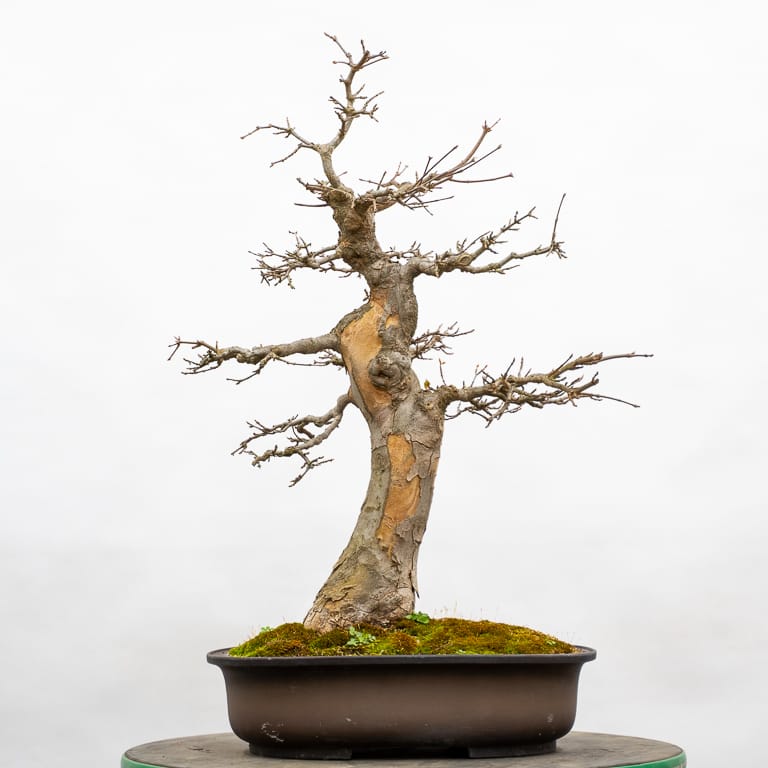
Trident maple
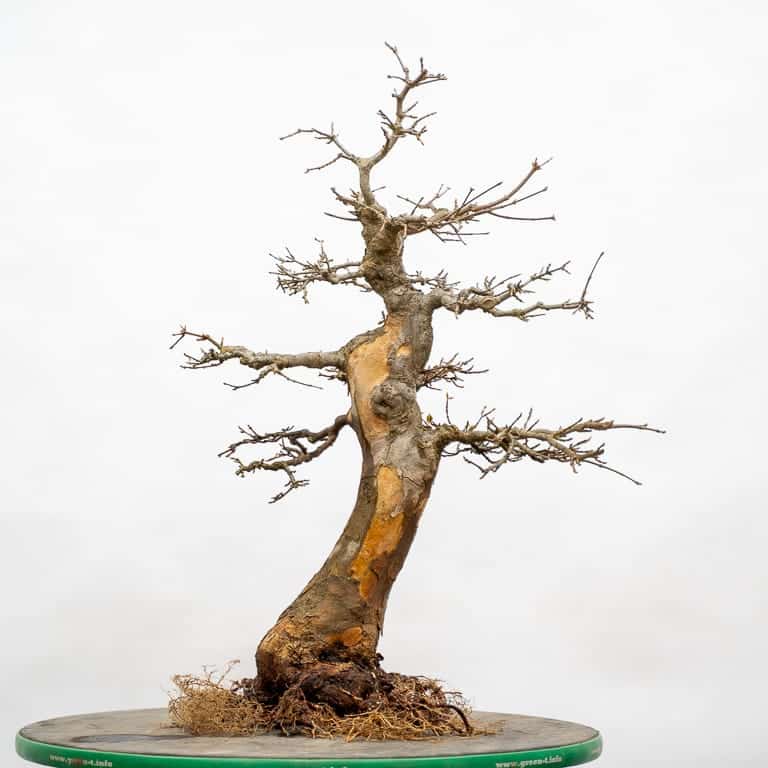
After removing the soil
The tree had been well-cared for but was growing in a mix of mostly organic soil. As a result, there were few healthy roots.

Close-up of the roots
Fortunately, trident maples are a hardy species that can respond well to bare-rooting. To preserve as many roots as possible, I only removed a few that were growing straight down.
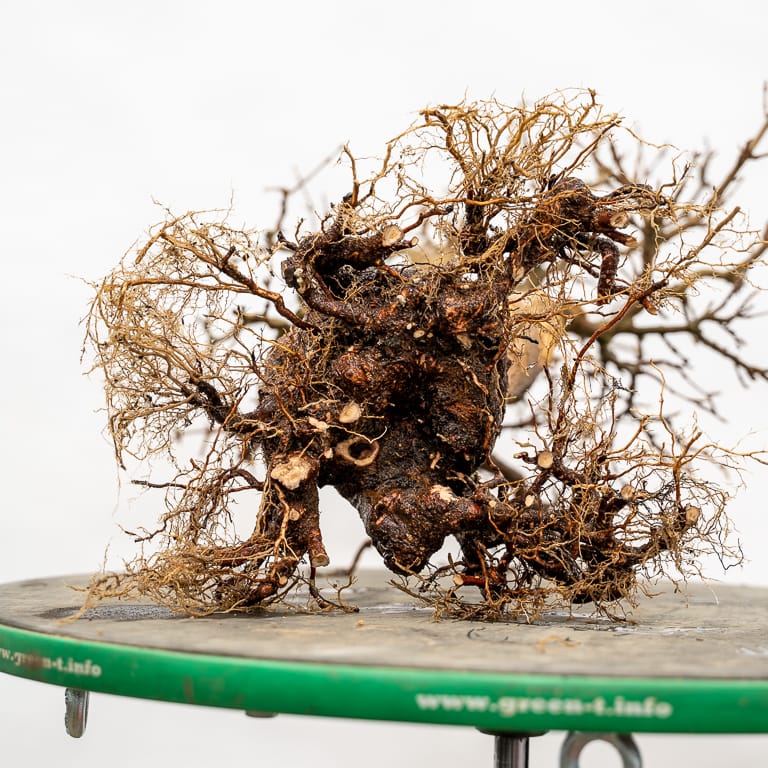
After pruning the downward-growing roots
I found a pot by Sara Rayner and used straight Clay King (80% akadama, 20% pumice) for the soil mix.
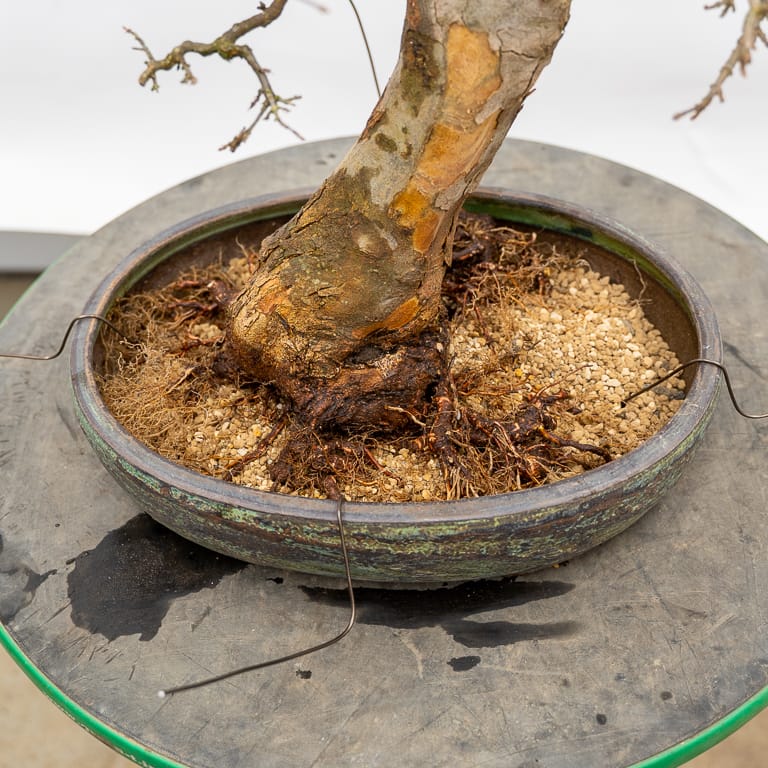
Setting the tree in the pot
Here’s the tree after repotting.
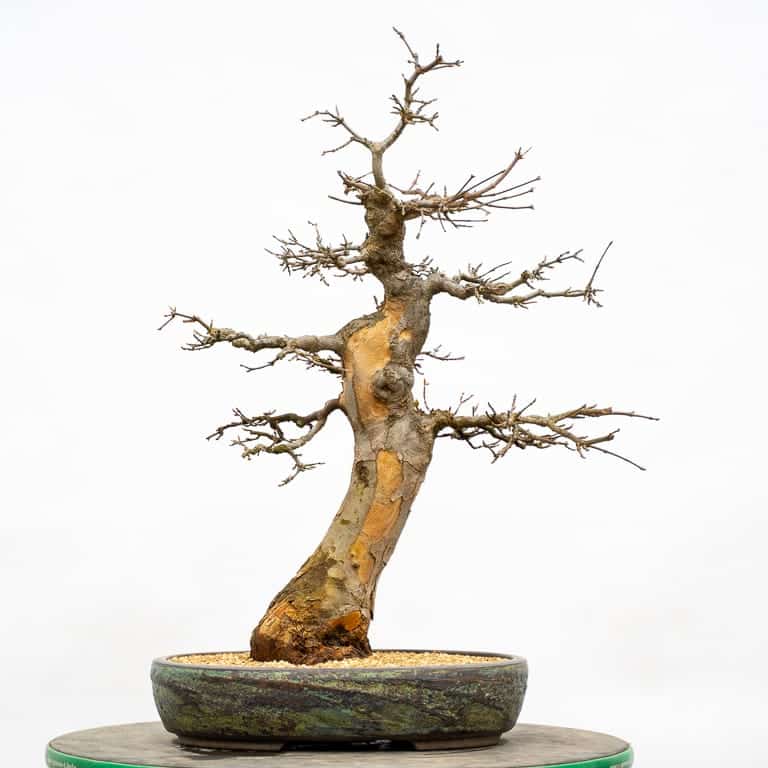
Repotting complete, February, 2020
I normally prune the branches before repotting, but because there was minor branch dieback, I left the branches alone.
A few weeks ago, the buds opened and there are now leaves on all of the branches.
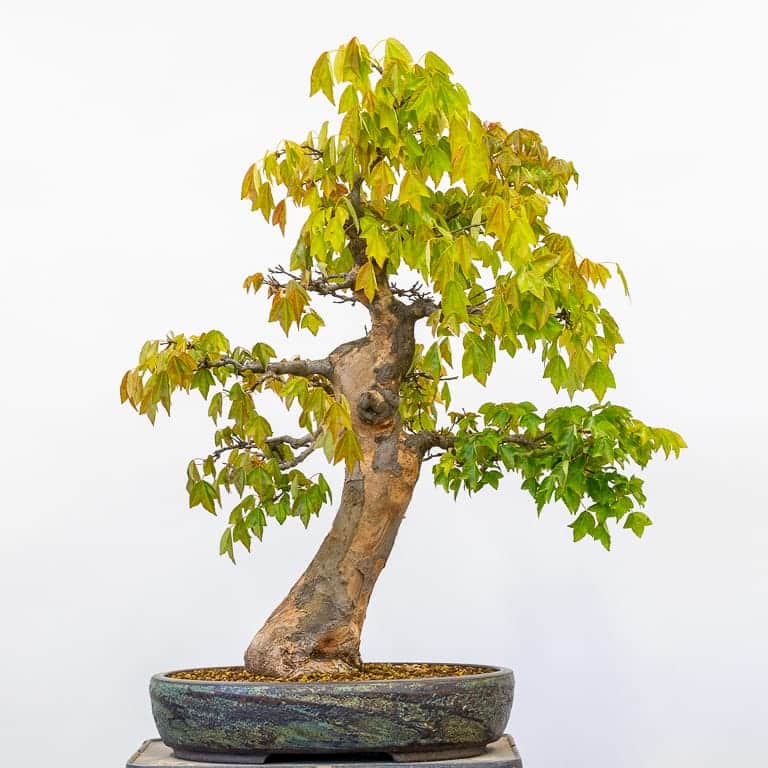
After leafing out – April, 2020, 26″ tall
I plan to let the tree grow freely this year as the goal is to generate as many roots as possible. Once the tree has more roots, I can start training the branches, possibly as soon as this fall.
Video Consultations Now Available
Have questions about your trees? Schedule an appointment to discuss strategies for improving your bonsai. Learn more about Bonsai Tonight’s Video Consulting.
English-language consultations are available worldwide.
Subscribe to Bonsai Tonight
New Posts Delivered Every Tuesday and Friday
Gary says
LOVE the Sara Rayner pot. I have one from her as well with that glaze. And, it just so happens that I have a trident maple in mine as well.
John DeMaegd says
I have a few of her gorgeous pots, but I’ve never seen that glaze? it’s beautiful!
Jonas Dupuich says
Thanks John – I haven’t seen many like it either!
Jonas Dupuich says
Thanks, Gary – the glaze is a fun match with tridents.
Andy says
There is no nebari. Moreover, on the left side there is even a reverse one. Judging from current state of the roots, there isn’t a chance for a nebari for… well… quite some time.
Jonas Dupuich says
Good catch Andy – any suggestions for making improvements?
Andy says
Only the obvious one: stick it in the ground for a couple of years and grow long thick roots. Together with the current thick trunk at the bottom they will form a proper nebari.
Jonas Dupuich says
I may try to do the same thing in a wooden box (no space for ground growing at this point). Thanks, Andy!
Bruce says
Layering on the left side. A piece of cake with the mighty tridents.
Lars Grimm says
Do you see any root grafts in the future for this tree, possibly on the left to improve the basal flare?
Jonas Dupuich says
Good question Lars – I’ll wait to see what the roots look like the next time I repot and make a plan then. Grafting would be a fun project so that’s a good candidate for making improvements!
scott chadd says
Bonsai with this type of problem, low root growth/energy, used to be more frequent. 40-50 years ago many bonsai persons planted their trees in dense soil without much space for exchange with the atmosphere and fast drainage through the root zone. The only benefit (if it can be called that) of this situation is that the leaves are often quite small due to the depressed metabolism of the tree.
Jonas Dupuich says
Ha, now that’s a silver lining! I’ve seen the same. If a tree is just healthy enough to stay alive, the internodes often end up being short and the tree can acquire great character.
Keith Jarvis says
Thanks Jonas, love what you’re doing. It’s probably too early to be focused on design, but I am wondering your opinion about the second branch on the left. Its long straightness is an unfortunate eye draw.
Does it bother you too?
Jonas Dupuich says
Hi Keith – yes, it bothers me too! I expect I’ll be significantly reducing the branches when I get started on the styling work, and that long, straight branch is a strong candidate for removal. Thanks for the note!